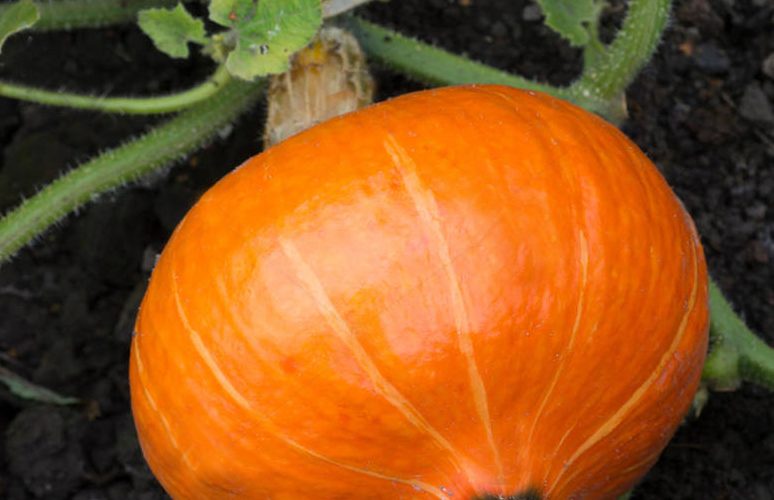Squash and pumpkins are good growers in the kitchen garden. They’re amongst the most rewarding of veggies to grow too. If they get plenty of sunshine, water and have room to grow, then there’s almost no stopping them. But there are a few little tricks to growing them that will give you a much better and tastier crop.
Let’s start with getting the basics right…these really do like to have a lot of sunshine, so make sure you’re planting them in the sunniest spot in the garden. They are also incredibly thirsty plants, and you will need to give them a lot more water than you’d give to other plants like spinach and chard, for example. Finally, they do grow to quite a big size, so you need to make sure they’ve got room to ramble. We normally plant pumpkins and squashes at least a metre apart, but if you can leave them a bit more space, then do. You can also grow them up a trellis to save space in the garden.
Now, the fine tuning comes in. They will do much better in a really rich soil, so we would suggest digging a hole that is a bit bigger than you need, adding plenty of good quality compost and throwing in a couple of handfuls of wormcast fertiliser before popping the plant in the ground. Water them in well and cover with soil. Once you’ve planted your pumpkins and squashes, draw a small mound of soil up around the base of each plant. This will help to retain moisture. Then add a mulch around the plant. Again, this will help to retain moisture (we did say they were thirsty plants!)
Be vigilant for slugs in the early days. Then as the plants grow, watch out for powdery mildew forming on the leaves and cut off any affected leaves and burn them. As flowers and fruits start to form, they will benefit from a liquid feed.
Winter Squashes and Pumpkins:
It is easy to get carried away when fruits of pumpkins and winter squash start to form, as there will be a lot of them. But beware of wasted energy. In the UK we don’t have enough sunshine for ALL the fruits to ripen before the nights start to draw in, so you will get much better results if you cut off fruits to leave just 4 or 5 on each plant. Cut back some of the leaves to make sure that the fruits are getting full sunshine to help them ripen. Pop a sheet of cardboard or a layer of straw underneath each fruit to stop it from rotting on the soil. Don’t harvest the fruits too quickly. Once they’ve reached full size and their skin has changed colour, leave them for 3 or 4 days further to soak up those sun rays to sweeten their flesh.
Summer Squashes and Courgettes:
Once fruits start to form they will grow quickly. You should pick courgettes as soon as they reach the right size, before they turn to marrows. This will keep the plant producing more and more and you’ll get a great harvest right through to autumn. Summer squashes should be harvested and eaten as soon as they ripen.

